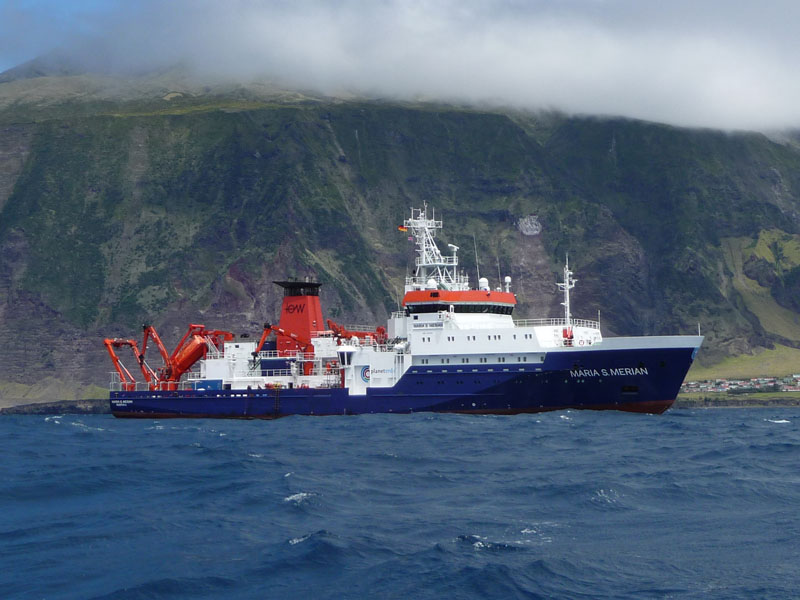MARIA S. MERIAN MSM21/4
- Area:
- Offshore W-Spitsbergen
- Time:
-
13.08.2012 - 11.09.2012
- Institution:
- GEOMAR
- Chief scientist:
- Christian Berndt (20 attendees)
The Arctic changes rapidly in response to global warming and it is expected that this change will accelerate in the future (IPCC, 2001, 2007). Large areas of the shelves and continental slopes bordering the Arctic Ocean are characterized by permafrost and the presence of gas hydrates. In the light of a warming globe and potential hydrate dissociation in the Arctic Ocean this raises concerns for slope stability and additional greenhouse gas release into the atmosphere.
Our 2008 discovery of more than 250 gas flares at the outcrop of the base of the gas hydrate stability zone west of Spitsbergen (Westbrook et al. 2009) may be evidence that climate-change-induced gas hydrate dissociation is already ongoing, and there is the possibility that it will accelerate global warming in the future.
The goal of this leg is to determine whether the observed gas flares are caused by gas hydrate dissociation, and wether this gas hydrate dissociation is related to bottom water warming. We will address this hypothesis through a multi-disciplinary approach that comprises geological, geophysical and biological techniques.



